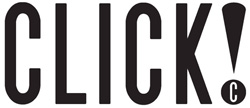We’ve been spending a lot of time outside lately. Tending our gardens, getting out on hikes, and strolling through the neighborhood (so. many. walks!) has helped us cultivate a fresh appreciation for the natural world. This is exactly why Chelsea Garrow’s work resonated with us. Her love of nature is captured in pressed plant and flower pieces that she calls Modern Herbarium.
Chelsea’s collection of preserved botanicals features a variety of familiar flora like dogwood, Queen Anne’s lace, licorice ferns, foxgloves and hops. These timeless, organic pieces are available both in-store and partially online, and the full collection debuts for Art Walk on 5.13.21.
How would you describe what you make?
I like to refer to my work as a Modern Herbarium. Pressed plants and flowers mounted between two pieces of glass that showcase detail and form. My composition style is minimalistic and straight forward - a nod to this timeless form of botanical study. My work exists at the junction between art and science.
What drew you to this medium and style of work?
Quite simply, my love of nature and a childhood filled with outdoor adventures in the Pacific Northwest are what lies at the heart of my artwork. I found that as I came into adulthood, certain plants such as ferns, huckleberry, and our towering Western Red Cedars became synonymous with home, so I wanted to preserve them and give them a place inside my home. I figured that if certain plants meant that much to me, I couldn't be alone, and decided to share this artform with others.
Can you tell us about your favorite piece in the current collection?
It is so hard to choose! Over the past year or two though Foxglove has become one of my favorite flowers to work with. I love the way the ombre colors kind of patina inside the press. I love the grand stature of these giant flowers and how they make such a statement floating inside the frame. The larger pink piece in this collection is one of my favorites I've ever created because of the movement that comes with the curve of these particular specimens.
If you could collaborate with anyone (living or not), who would it be and why?
I think studying botany and marine biology with Rachel Carson would have been amazing. Influential not only in the study of biology itself but in conservation of the natural world and bringing attention to the harm Humans could inflict upon it. A true trailblazer for women in science. I know this would give me a whole new perspective on the plants I harvest for preservation.
What’s the best piece of advice you’ve been given?
You have to put in your time. This came from my Dad. While he was talking about my professional career, I've found it helpful in the process of my art as well. It takes patience and practice, not only to master a set of skills, but to find yourself and your place in what you are accomplishing.

Can you describe your favorite part of the process in your work? The foraging and harvesting is definitely my favorite part of the process. I love that it forces me to slow down and look around me to see the everyday specimens growing wild all around us. It is always such a joy to find tiny pops of color on roadsides and in vacant fields - places that are not typically thought of as beautiful. It sends me outside even when other pressures of daily life tell me I'm too busy to take that time to be with Nature. And because of that, it helps me recenter and reconnect with myself through these gifts from the Earth.
When you are in the studio, what are you listening to?
If we're talking about music, I'm a country girl. I love mainstream artists like Miranda Lambert and Jason Aldean, but right now Chris Stapleton is my favorite. I've also recently started listening to more Americana and Bluegrass artists like Tyler Childers and the Steeldrivers. I'm also a big fan of relistening to my favorite stories on Audiobook. I'm a bit of a closet nerd so the Lord of the Rings and Harry Potter series are played pretty frequently.
What is your most treasured handmade possession?
I'm really lucky to come from a long line of makers. But before me, the craft of the family was quilting. I have a few different quilts that were made by my grandmother, great aunts and my mom. They would ship partially made quilts from California to Minnesota to Washington so that each person could complete their part of the project. They worked on their own, but they worked together and at the end of the day completed these beautiful, yet functional pieces of art.





